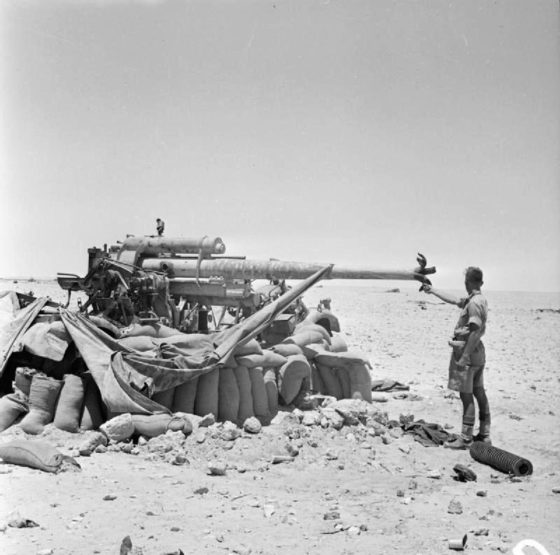
“The Siege of Kut would go down in military history as an early example of air drops.”
By Dr. Michael Tyquin
RESUPPLYING AN army in the field from the air is hardly a new concept in warfare. But in 1916, it had never been tried before.
It was a detachment of troops from the Indian Expeditionary Force, which had been deployed to Mesopotamia in the opening months of World War One to protect the vital Anglo-Persian oilfields from attack by Germany’s Ottoman allies, that would become one of the first armies in history to be supported by air drops. The story of how it happened is a fascinating one.
After securing the port of Basra, in modern-day Iraq, the IEF dispatched a force to Kut-al-Amara on the River Tigris, 177 kilometres to the north.
An expedition, which consisted of the 6th (Poona) Division, under the command of Major-General Sir Charles Townsend, was chosen for the task. Unfortunately, the force had less than half its complement of medical personnel and little in the way of medical supplies and equipment.
It advanced from Basra to Ctesiphon where it was defeated over a three-day battle in November. As this left Townsend with an effective force of only about 8,500, the general decided to withdraw towards Kut-al Amara to rebuild the strength of his army. His exhausted troops arrived at Kut on Dec. 3, 1915. Days later, a sizeable Ottoman force arrived and surrounded the town, touching off one of the longest sieges in British military history.

During the nearly five-month stand-off, hundreds of mainly Indian troops died from disease and starvation. As the siege dragged on, army doctors improvised medicine and dressings. But if the army dug in at Kut was to survive, some sort of resupply would be necessary.
“Our bread has been cut down to a 6 oz loaf,” wrote one Major John Stafford Barker, Royal Engineers on the 121st day of the siege — April 6, 1916. “We have no sugar, jam or saccharine left, only a scrap of butter, no cheese.”
By the following week, the senior medical officer in Kut made a list of the most urgent items. For British troops these were salt, flour, butter, cocoa.
But how could materiel even reach the besieged army, let alone break through the enemy cordon? Enter Britain’s fledgling air force. Aircraft were already proving their value as reconnaissance platforms, but could they carry food, ammunition and medicine to an army cut off in the field? It was decided to try.
The plan was simple: British and Australian planes, laden with food and medical stores, would fly low over the town at which point the pilots would release the bundles, which would be recovered by soldiers below.

A test drop was made on March 27 in answer to an urgent request from Townsend. It consisted of a millstone weighing 70 lbs. which was successfully delivered by parachute.
The concept proven, Townsend called for the garrison’s food requirements to be delivered by wireless.
On the advice of his medical staff, Townsend next requested 5,000 lbs (2268 kgs.) weight of supplies on a daily basis made up of flour, sugar, chocolate, salt, and ghee. This would provide a 6 oz. (0.17 kgs.) ration each to his 13,480 troops and followers and the 3,700 inhabitants still in Kut.
Food drops began on April 15. Nine planes of different types and load capacity would carry the supplies. The distance from the British forward airfield at Ora to Kut was just over 39 kilometres.
Over the next 15 days, the Royal Flying Corps would carry out 140 flights dropping nearly 16,000 pounds of food and supplies.
Soon the enemy began to intercept these missions of mercy and from April 24, British food flights were being attacked by German aircraft. A severe storm later that month wrecked all three new British planes brought up to help supply additional food.

One soldier later recorded that in the final days of the siege:
“We lived on the emergency and reserve rations which each regiment had in its keeping, and the food dropped by aeroplanes from the Relieving Force. These brought us white flour, some sugar and a little chocolate. The bread ration, however, was only 4 oz. or just one good slice a day each.”
Townsend opened negotiations with the Turkish Commander on April 26, and the last day’s ration was consumed on the day of the surrender.
By arrangement between the senior British and Ottoman medical officers and the Turkish commander, sick and wounded British and Indian officers and men who were in hospital when the capitulation took place, were exchanged for an equivalent number of Turkish prisoners.
The town surrendered on April 29 and an exchange of sick and wounded prisoners was arranged. The remainder proceeded into captivity, many of whom died along the 1,600 kilometre route to Turkey.
Despite the disappointing outcome for the British and Indian forces in Mesopotamia, the Siege of Kut would go down in military history as an early example of air drops.

ABOUT THE AUTHOR: Dr. Michael Tyquin is a medical and military historian, based in Tasmania. His latest book is Madness and the Military, published in October 2019.









